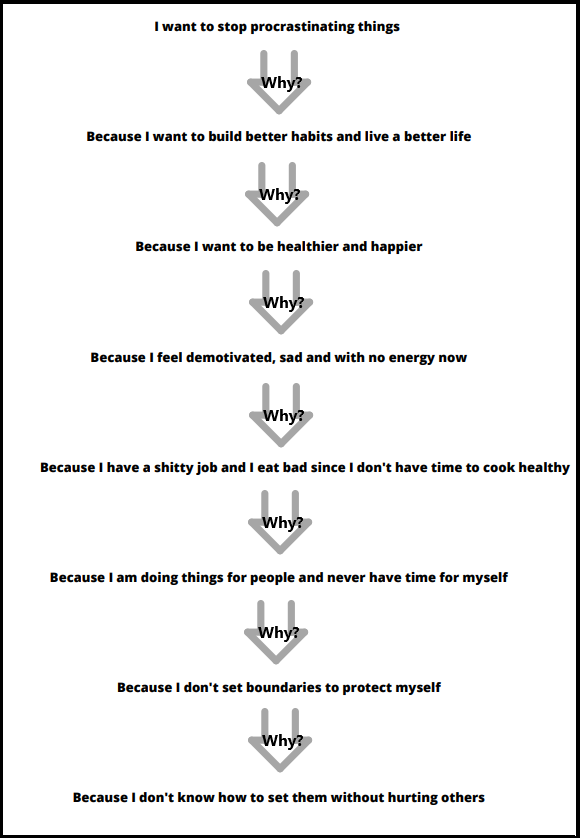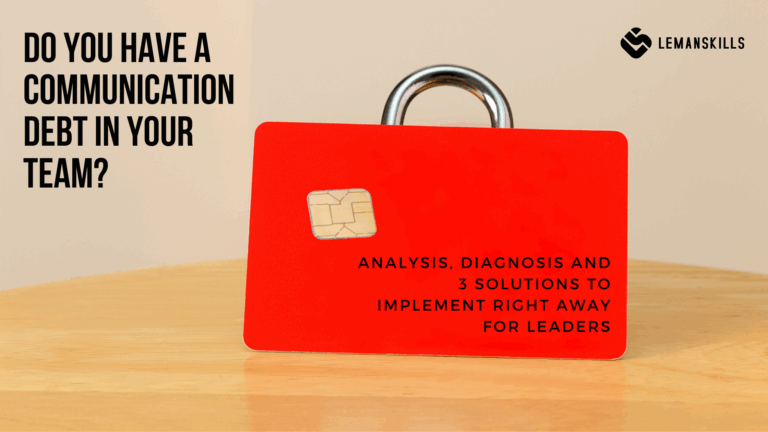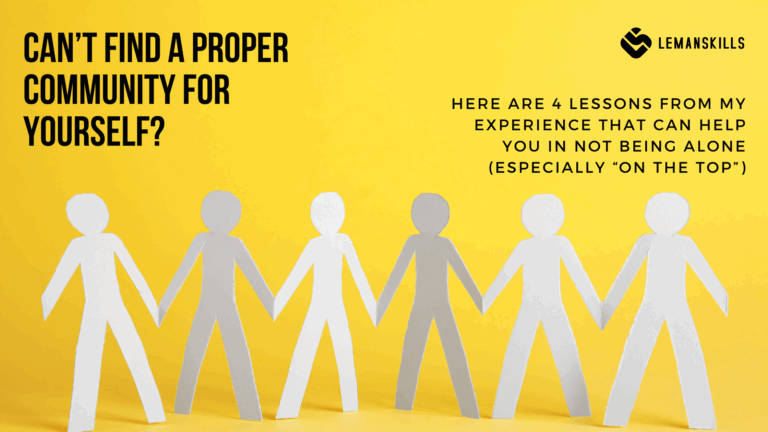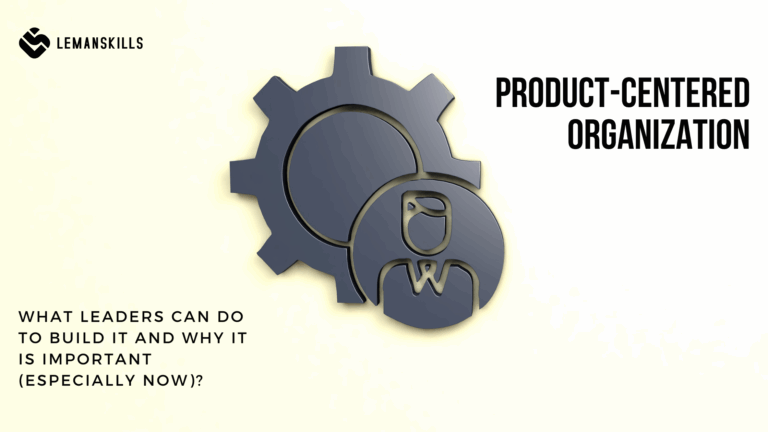We all have better and worse moments in our lives. Especially when something is changing (and let’s be honest – this world we live in right now is connected with many elements that transform all the time), we tend to feel overwhelmed. Do you know the feeling when everything is fine until there isn’t, and when everything seems to go down at the same time? One thing leads to another, and we experience a series of events we would pretty much prefer to avoid.
Inflation. Restructuring in the company and a job cut. A breakup. Health problems. Sick kids. Shortage of money. Death. Mental issues.
You name it. A lot of things can influence our state of being in control of our lives. And in those moments, we often freeze, wait for the better times and hope for the best. But hope is not a strategy. We need something else to transform overwhelm into a power that can keep us moving, succeeding, achieving our goals. Despite all the thigs that are happening, it’s our choice what we do with the time we have. So what to do with it to create a power, not a burden?
Transform your mindset
Did you ever made a great decision when you were overwhelmed? Are you the best version of yourself when you are tired or frustrated? Do you thrive when you freeze in difficult times waiting for the better ones to come? Are you the best partner, friend or parent when you feel you don’t have control over what’s happening in your life, or you snap easily?
I know I am not the best version of myself while feeling all of those. I don’t make good decisions, or I procrastinate things. I snap on other people, and I’m mean to them. That’s why I really take care of not letting this state of mind happen to me very often – I see how much damage it does to my life.
To be better in every aspect of your life you want, you need to transform your mindset.
From whining to doing.
From looking for excuses to making decisions.
From seeing only obstacles to seeing opportunities.
From being scared to being courageous.
From waiting for others to change to changing yourself.
From hope to action.
If you have a mindset that says: “now the times are hard, let’s wait until it’s better”, you sit on your hands and hope for the best. But as mentioned before: hope is not a strategy. It is a believe that something will magically change for us. And guess what? It won’t. Only we can do the work, make good decisions about what we do with our time, with whom we spend it and in what we invest.
Transform your mindset means making a conscious choice of how we see the world that is around us and how we shape it. Are we victims of what’s happening or are we owners of it? Do you want to be a master or a victim?
Use good old “7 WHY” tool
Easier said than done, right? That’s where the tools come to support us and make a structure around how we think and what we do as a consequence of those thoughts.
The 7 Why method is based on a 5 Why framework, invented and implemented in Toyota in the 1930s, popularized in 1970s. Back then it became one of the most efficient ways to understand what’s actually happening on the shop floor, rather than guess what might be happening in the boardroom. To be honest, we all can use it nowadays – maybe even more than ever.
Ask yourself “why” you want to do a certain thing, achieve a certain goal, or get rid of a certain bad habit 7 times to unleash the real truth that is underneath the surface. If you are familiar, you can see the links to the Simon Sinek and his Start With Why idea, which influenced a lot of companies and lives all over the world.
Here is an example of how it can look like.

7 steps might look like a lot, but thanks to that, we can really get to know what is the real root of the situation we face. Do you want to transform your life? Do you want to transform your business, your relationship? Do you want to have more energy, passion, time?
It’s really powerful when you discover what is really happening within you, sometimes on a really deep level. As you can see in the example above, the first need or goal was completely different than the last thing. This person never learned how to set healthy boundaries to not be used by others at work. She really loved her work at the beginning, and she never procrastinated a thing. So the root of her behavior was completely somewhere else, and procrastination was a consequence, not a source.
To transform overwhelm, lack of motivation, procrastination or a fear of change, do 7 Whys and see what is the root of this feeling. Discover what’s really out there, it’ll be so much easier when you know the truth and can actually address that.
Think through OKRs’ lens
Once you have the real thing you want to achieve, overcome or transform the overwhelm into, now is the time to make a little structure around it to make it happen. You are not going to change your life by sitting on your hands and waiting for the better times to come. You need to take action, consistently, everyday to make happen what you want to have in life.
That’s the place where OKRs come to support us on this journey. This is my favorite way to make a real path for my dreams, plans and things I want to achieve.
Let’s use 2 examples of how to transform overwhelm into power and a real change: the one from the 7 Why method, and the second one from my private list.
The last level in our example was: “Because I don’t know how to set them without hurting others”.
Objective: Become a person who sets boundaries without hurting other people.
KR1: participate in a setting boundaries course in Q1 2023.
KR2: make a list of 3-5 situations (or relations) where I need to set better boundaries in March 2023.
KR3: set 3 boundaries in Q2 2023.
Remember that Objective needs to be in a stretch zone, aspirational and important for the person who creates it. 3-5 Key Results will be optimal to measure how close we bring ourselves to achieving our goal.
And here’s my example:
Objective: Become the healthiest possible version of myself.
KR 1: Run a 5km run in less than 30:00:00 in Q1 2023.
KR 2: Have a 57kg weight in Q1 2023.
KR 3: Finish one mindfulness course in November 2022.
Key Results are here because thanks to them you will know that you’ve achieved your goal.
When you have KR, you need to find a way to achieve them – regarding my example can be to prepare a training plan for a 5k run, run 3-4 times a week, eat and sleep well etc. Regarding the first example – we need to find a course, organize the money, maybe encourage a friend to come with us to feel better. The most uncomfortable action will be the moment when we actually set the boundary – we need to get prepared to the conversation, reaction (ours and the other person) and the consequences (potential and real ones).
But also prepare ourselves for the change, feeling great and proud about making those steps to become a better person. OKRs should help you in organizing your energy around things that are important for you. By writing them down and checking them on a regular (i.e. weekly) basis, you make sure that you invest your time, energy and mind in what brings you closer and closer to what you want to do with your live.
The bottom line
Isn’t it the better strategy to transform feeling hopeless, overwhelm into feeling in control? Isn’t it the better feeling, with the better outcome? We all can use more positivity, focus on the things that serve us and getting rid of those that have a bad influence on us.
Focus on things that you have in your scope of control. Use 7 WHYs and OKRs to dig deep and make a structure around yourself. Make better decisions everyday by using what have within your OKRs. You’ll see how making a choice like that is going to change your mindset, your relations and at the end – your whole life.




